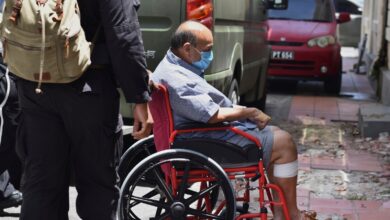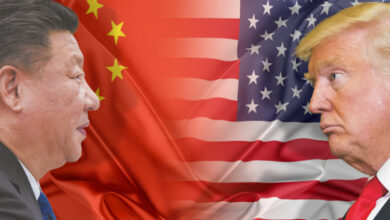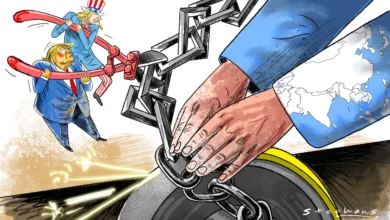OPT Under Attack: International Students Face Uncertainty In Trump 2.0

The halls of American universities, once bustling with optimistic international faces, now echo with horroring whispers of anxiety. A legislative bombshell recently dropped in the Senate has sent tremors through campuses nationwide. The innocuously named “Fairness for High-Skilled American Act 2025” carries within its pages a proposal that could upend the dreams of countless foreign students, which is the complete elimination of the Optional Practical Training (OPT) program.
For decades, this program has served as the golden bridge between academic achievement and professional opportunity for international graduates in America. It has let them use their newly acquired knowledge in practical environments, so acquiring great experience before either going home or chasing longer-term choices in the United States. Now, as the political winds shift under the restored Trump 2.0, this bridge appears increasingly weak, swinging dangerously above turbulent waters.
Can We Call This OPT As The Sword of Damocles?
The famous story of Damocles, who discovered a sword swinging from a horsehair above his head at a feast, accurately describes the current position of international students. The sword, which represents the potential end of OPT, dangles ominously over their carefully planned strategies and goals. The Republicans who introduced this bill argue that the program gives foreign students an unfair advantage over American graduates in the job market. “This isn’t just about policy,” remarked one political analyst who wished to remain anonymous, “it’s about the broader ‘America First’ philosophy resurging in this second Trump era.”
This isn’t the first time OPT has found itself in the crosshairs. Similar attitudes persisted beneath the surface of policy debates throughout Trump 1.0. The America First Policy Institute, an organization with close links to Trump administration officials, has previously urged for the termination of OPT, claiming that it “has no foundation in legislation” and operates only as a “legal fiction.” Their stance exemplifies a basic contradiction in American immigration policy which is weighing economic advantages against worries about domestic employment.
The statistics paint a noteworthy picture of OPT’s significance. According to the Open Doors 2024 report, approximately 1/3rd of Indian students in the US during the 2023-24 academic year were eligible for OPT. In 2023, an impressive 539,382 foreign students were working in the US under related programs
- 276,452 on OPT
- 122,101 on STEM OPT
- 140,829 on Curricular Practical Training (CPT).
Unlike the more well-known H-1B visa program, these initiatives have operated without annual caps, allowing for greater flexibility and opportunity.
“When you look at these numbers,” explains Dr. Sarah Thompson, an education policy expert at Georgetown University, “you begin to understand why this is causing such alarm. We’re not talking about a niche program here. We’re discussing a massive workforce that has become integral to certain sectors of our economy, particularly in technology and engineering.”
These aren’t just statistics; they represent real people with dreams, ambitions, and significant contributions to make. As Mark Twain once quipped, “There are three kinds of lies, aka lies, damned lies, and statistics.” But in this case, the numbers don’t dare to lie about OPT’s importance to America’s educational landscape.
Historical Perspective Of Immigration and Education in America
The existing debate about OPT lies within a wider historical narrative regarding America’s relationship with foreign talent. The US has always prided itself on being a beacon for the world’s greatest brains. From Albert Einstein fleeing Nazi Germany to Sergey Brin of Google fame arriving from the Soviet Union, immigrant intellect has fueled American innovation for generations.
Post-World War II, as America cemented its superpower status, the country recognized the strategic importance of attracting global talent. The Immigration and Nationality Act of 1952 created the F-1 student visa category, but it wasn’t until the 1990s that OPT began to take its current form. The program expanded significantly in 2008 when the Bush administration extended the work period for STEM graduates from 12 to 29 months, later increased to 36 months under Obama.
These expansions weren’t arbitrary. They responded to real economic needs and competitive pressures. As other nations like Canada, Australia, and the UK developed increasingly attractive post-study work options, the U.S. risked losing its educational magnetism. OPT became not just an educational tool but a competitive necessity.
“It’s worth remembering,” notes immigration historian Dr. James Chen, “that these programs evolved through administrations of both parties. The recognition that America benefits from retaining foreign graduates has traditionally transcended partisan divides.”

Campus Panic and Real-world Consequences
The proposed bill has triggered what one university administrator described as “a tidal wave of anxiety” across American campuses. Students on F-1 and M-1 visas are frantically consulting with immigration attorneys or researching alternative destinations like Canada and Germany, which offer more welcoming policies for educated immigrants.
Citing policy uncertainty, prestigious colleges such as Cornell, Columbia, and Yale purportedly advised their international students to avoid foreign travel for fear of being denied re-entry. Summer plans are being canceled, and family reunions have been postponed; imagine the psychological toll on these students and their families!
“I’ve invested over $80,000 in my study here,” says Priya, an Indian computer science graduate student. “The prospect of having to leave right after graduation, without implementing anything I’ve learnt, is depressing. “It’s like having the rug ripped out from under you.”
The human cost goes beyond individual failures. Universities stand to lose a lot if OPT vanishes. International students frequently pay full tuition, essentially financing many educational institutions. A significant reduction in international enrollment might result in budget cuts, program eliminations, and possibly school closures.
As Charles Dickens might have observed were he witnessing this situation: “It was the best of times, it was the worst of times” – the best for those advocating America-first hiring policies, the worst for those whose academic and professional journeys hang in the balance.
The Arguments on Both Sides
Proponents of eliminating OPT, like Jessica M. Vaughan of the Center for Immigration Studies, characterize the program as “unregulated” and “vulnerable to abuse.” During a recent U.S. House Judiciary Committee hearing, she argued that OPT and CPT create an unchecked “guest worker” population that potentially undermines opportunities for American graduates.
The US Tech Workers coalition has been particularly vocal, tweeting that OPT is a “guest worker program killing jobs for new American college grads.” In 2022, WashTech, a workers’ alliance, filed a lawsuit arguing that OPT enables companies to bypass the H-1B cap while undercutting American wages.
On the other side, advocates emphasize OPT’s critical role in addressing labor market gaps and maintaining American competitiveness. Aaron Blumberg, an immigration attorney at Fragomen, warns that curtailing the program “could result in a significant loss of top talent, which would harm the future flow of skilled professionals into the US and, in turn, diminish the country’s ability to innovate and lead critical industries.”
During Trump 1.0, researchers estimated that terminating OPT would result in around 443,000 job losses during the next decade, with 255,000 jobs held by American workers. This unexpected finding shows the intricate relationship between immigration and employment creation. Foreign talent often doesn’t simply take jobs; it frequently creates them through entrepreneurship, innovation, and economic stimulation.

“The debate often gets framed as a zero-sum game,” observes economist Dr. Elena Rodriguez. “The reality is much more nuanced. Economies aren’t fixed pies where one person’s gain is another’s loss. They’re dynamic systems where talented individuals often expand opportunities for everyone.”
Looking Ahead: What’s Really at Stake
If the bill passes, the effects will stretch well beyond the campus. America’s tech sector, which has depended largely on overseas talent pools, may confront severe difficulty in filling specialized roles. Universities may experience a decline in international applications, affecting everything from research funding to classroom diversity.
The issue remains about-
- Is this more about economy or identity?
-
Is OPT actually a threat to American workers, or does resistance arise from wider concerns about immigration and cultural change?
As with many policy debates in today’s polarized America, the answer likely contains elements of both.
For now, universities are stepping up with support networks, legal briefings, and contingency planning sessions. Organizations like ForeignAdmits, founded by Nikhil Jain, are helping students navigate their limited options in an uncertain landscape.
“American higher education has always been one of our greatest soft power assets,” reflects former university president Dr. William Harris. “When we educate the world’s future leaders, we create lasting connections and goodwill. Policies that discourage international students don’t just hurt those individuals – they diminish American influence globally.”
As this debate unfolds, it’s worth asking what kind of message America wants to send to the world’s ambitious young minds. In the words of Emma Lazarus, whose poem adorns the Statue of Liberty: “Give me your tired, your poor, your huddled masses yearning to breathe free.” Perhaps in the 21st century, we might add: “and your brilliant students yearning to learn and contribute.”

The fate of OPT remains uncertain. The bill faces significant hurdles in the legislative process, and even its sponsors acknowledge it may be more symbolic than immediately practical. But symbols matter in politics and in life. For many international students watching this debate unfold from library carrels and laboratory benches across America, the message already feels painfully clear: their presence is contested, their contributions questioned, their futures uncertain.
In a global competition for talent, perceptions can prove as powerful as policies. Whatever happens with this specific legislation, the uncertainty itself may already be achieving what its proponents desire – encouraging foreign students to look elsewhere for their educational and professional journeys. As one university counselor put it: “You don’t need to cut down the bridge if you can make people too afraid to cross it.”
The sword of Damocles continues to hang, and an entire generation of global scholars watches anxiously to see if the horsehair will hold.




